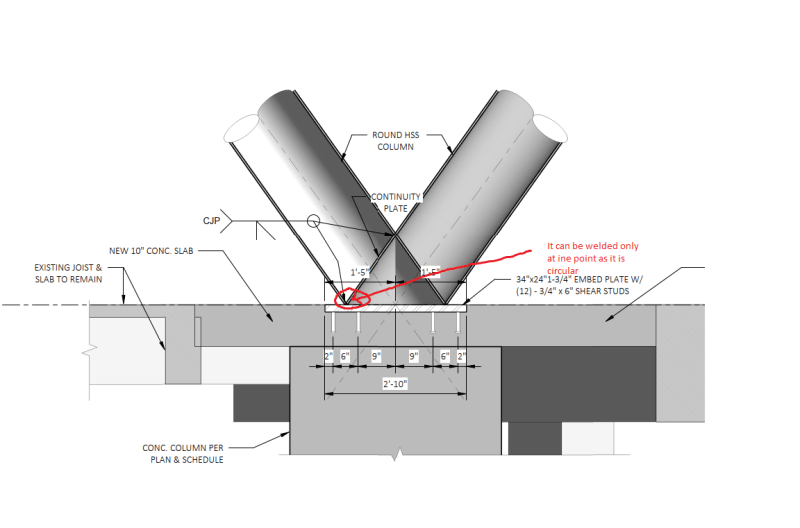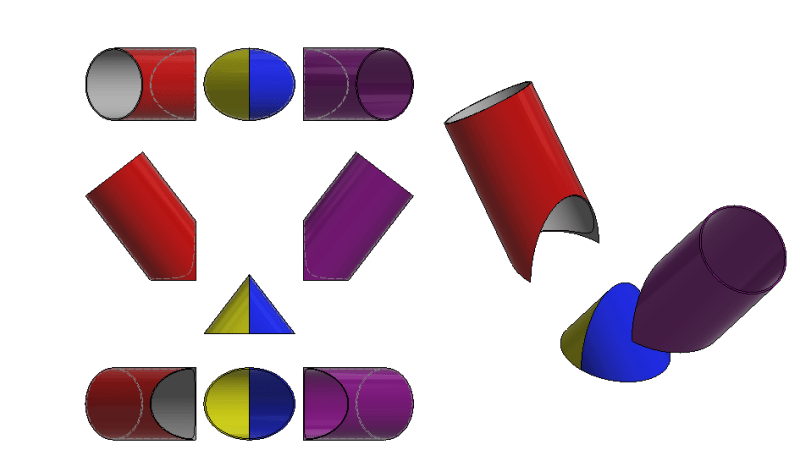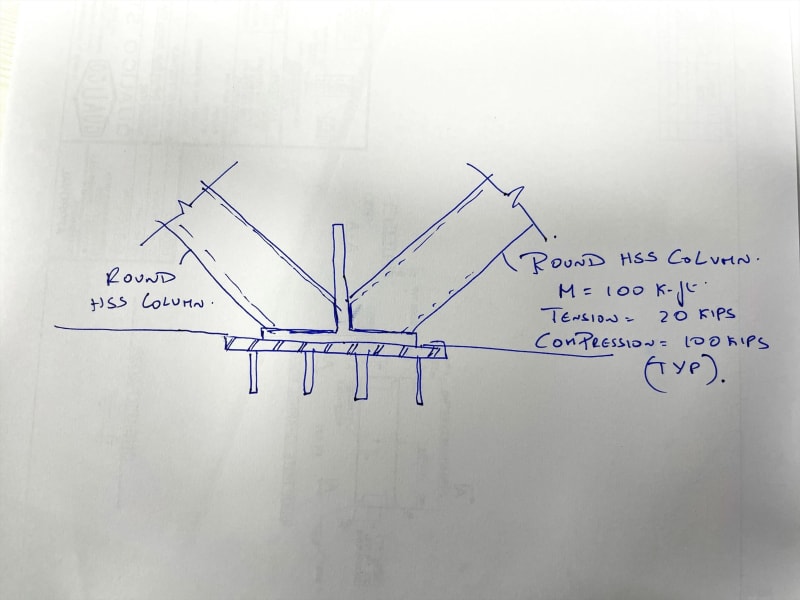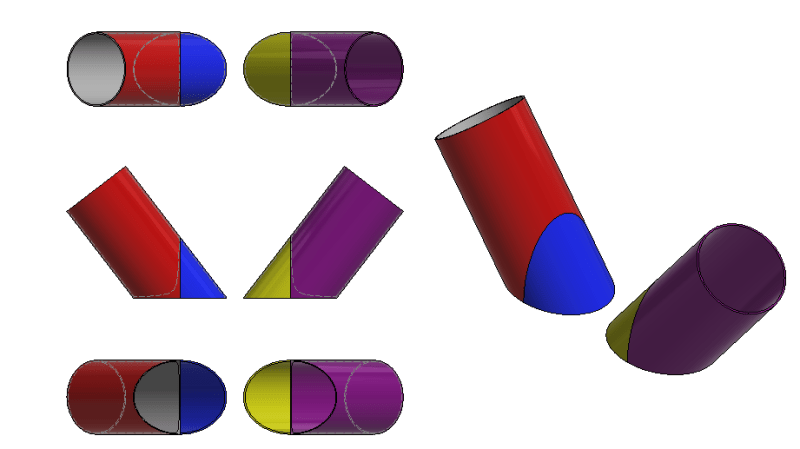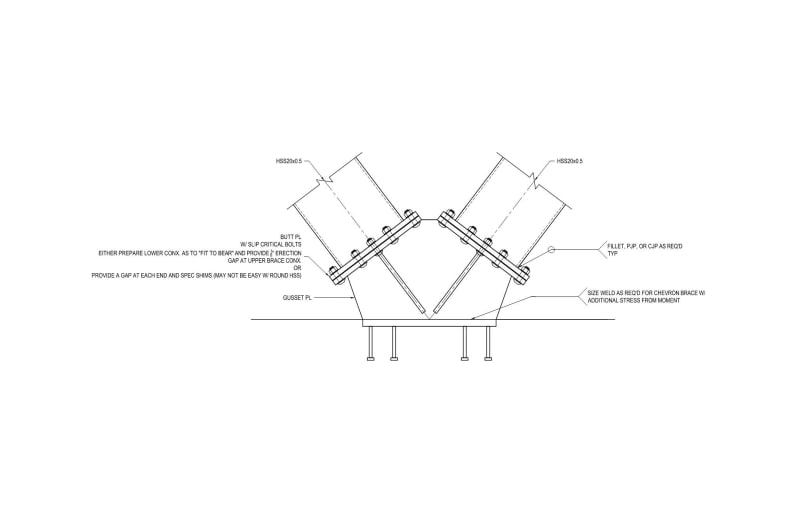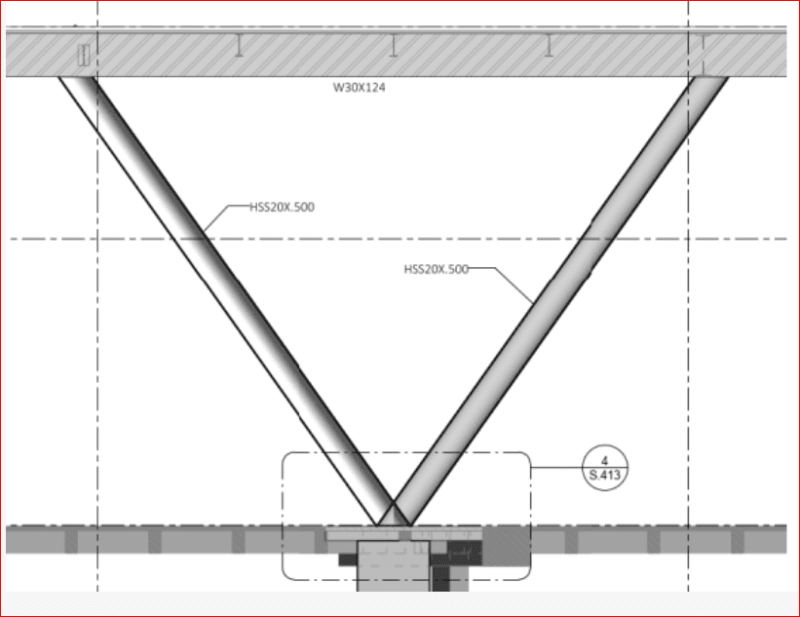Nitesh Sadashiva
Civil/Environmental
Hello all,
I have a condition where two round HSS columns (HSS20x0.500) are connecting to embed plate as shown in the sketch. EOR has specified the design moment of 100K-ft along with 100 Kips compression and 20 Kips tension (ASD values). The sample detail provided by EOR shows continuity plate. Since it is a round HSS, I am not sure how this continuity plate can be provided for round HSS. Anyone came across the similar connection? Any design example for similar case is much appreciated.
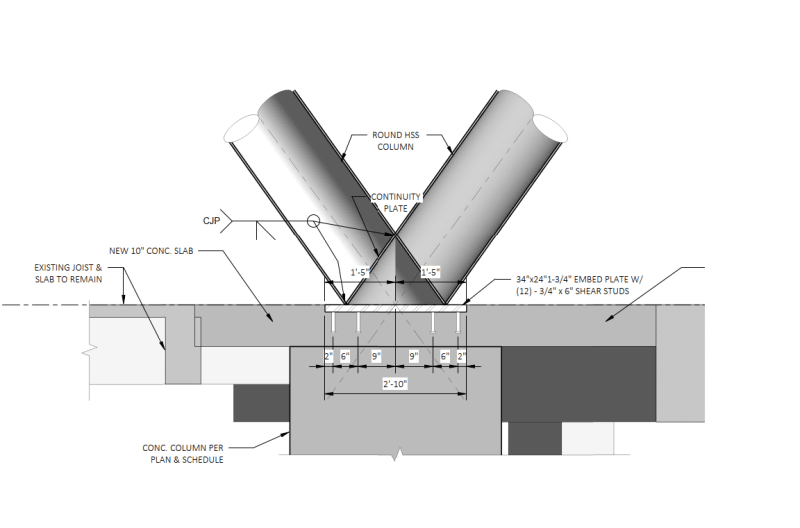
I have a condition where two round HSS columns (HSS20x0.500) are connecting to embed plate as shown in the sketch. EOR has specified the design moment of 100K-ft along with 100 Kips compression and 20 Kips tension (ASD values). The sample detail provided by EOR shows continuity plate. Since it is a round HSS, I am not sure how this continuity plate can be provided for round HSS. Anyone came across the similar connection? Any design example for similar case is much appreciated.


